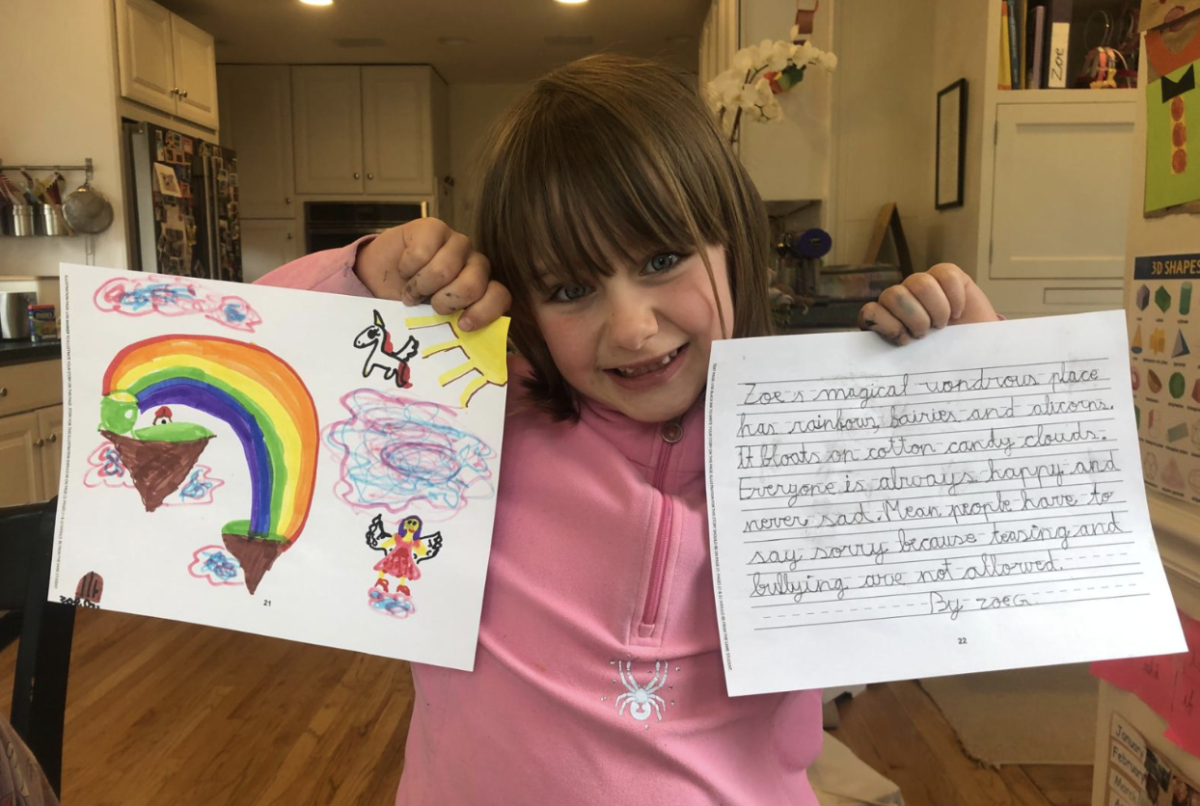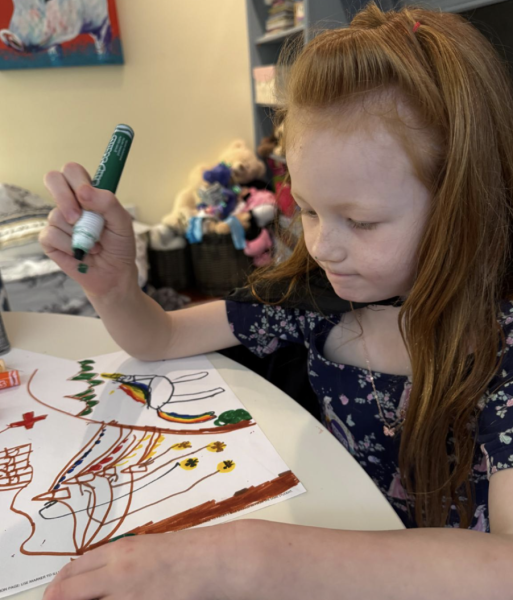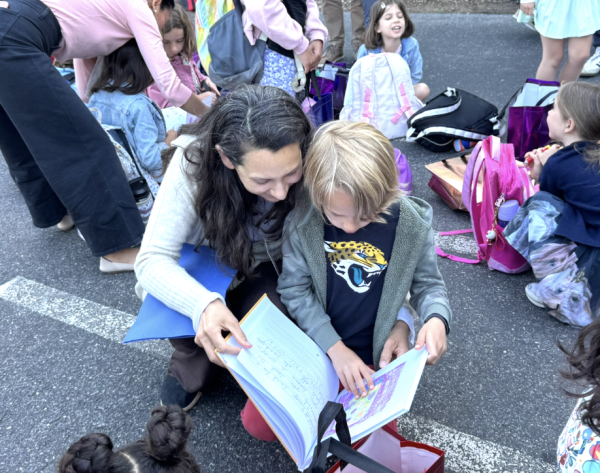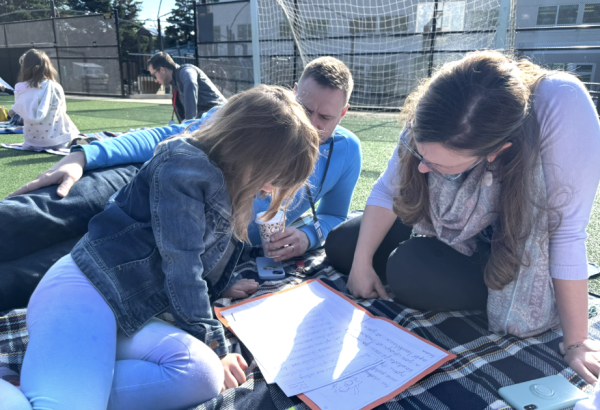
On a bright spring day at the WIS Primary School, six- and seven-year-olds celebrated an achievement many adults never accomplish: becoming published authors. For these first graders, mastering the fundamentals of reading wasn’t the destination – it was the launching pad for their literary journey.
This spring, amid the excitement of end-of-year activities, these young students unveiled their collaborative masterpieces: hardcover books titled “Our Imaginary Land,” crafted in both Spanish and French. The twin publications represent far more than children’s tales – they embody the transformative power of early multilingual literacy and creative expression.
In an educational landscape often dominated by standardized assessments and rigid literacy benchmarks, this project offers a compelling alternative: What if learning to read and write was treated as a joyful, creative endeavor from the very beginning? What if children were empowered to see themselves as storytellers from their earliest classroom experiences?
A Parent-Led Labor of Love
What makes this literary achievement even more remarkable is its origin story. The project began not as a classroom assignment but as a heartfelt surprise orchestrated by three parents – Annie Breaux, Inna Dikel Sow, and Anjali DSouza—as a thank-you gift to the teachers who had nurtured their children’s bilingual development throughout the year.
“We wanted to create something meaningful that would showcase what the children had learned while expressing gratitude to their amazing teachers,” Breaux said.
The parent trio worked behind the scenes, coordinating with families, students, and the publishing company to bring the vision to life.
“Watching a child transition from sounding out letters to crafting original stories is nothing short of magical,” Breaux said. “These books demonstrate that literacy transcends merely decoding words – it’s about constructing meaning, envisioning new worlds and using language as a bridge to connect across cultural boundaries.”
The books’ structure reflects this collaborative spirit. Each participating student contributed a one-page story accompanied by their own hand-drawn illustration. These individual pieces were then thoughtfully woven together into cohesive narratives that preserved each child’s distinctive voice and artistic style while creating unified reading experiences.
Beyond Words on a Page
The bilingual books emerged from the school’s inquiry-based curriculum, where students spent March developing their stories through an authentic publishing process. Working with their parents, students brainstormed fantastical settings, developed memorable characters, and crafted surprising plot twists.
The stories ingeniously weave together elements from the students’ year-long explorations: Where We Are in Time and Space, How We Organize Ourselves, their Animal Unit and their current Book unit. Each element was carefully crafted to reflect the distinct voices and visions of these young authors.

Voices from the Young Authors
The students’ own words reveal the depth of imagination and genuine enthusiasm that fueled their literary creations. Seven-year-old Charlie Cox drew inspiration from his longtime fascination with koalas.
“I just like koalas a lot and I like stories, so I started making these little stories about koalas,” Cox said. “When [I was asked] to make the story, I just knew I should make it about koalas.”
His ambitions extend beyond this first publication.
“I’m thinking of writing bigger books, longer books, about animals and monsters, since my mom taught me to type,” Cox said.
Seven-year-old Evie Breaux brings an unwavering belief in magic to her storytelling with the confidence only a first grader can muster.
“Because fairies are real and they visit me: I’ve lost seven teeth, so I know,” she said. “And someday I will go to Fairyland.”
Her story features “four fairies and a unicorn” where “every fairy gets to go to school.” For her next book, she envisions expanding her cast.
“I would create different ones – fairies, unicorns and witches,” she said. “And I would like to make one of my friends a character.”
Ahmadou Sow channeled his love of building blocks into his narrative.
“I came up with the idea because I love legos and thought they would be great in my story,” he said.
His “Legoland” features a moral dimension where Lego heroes live alongside punished trespassers.
“It’s about Lego people that are positive but the bad people need to go [to] jail because they are not allowed in Legoland,” Sow said.
The creative influences span from beloved film franchises to personal passions. Inés Herrera Elizalde drew inspiration from multiple sources.
“The Harry Potter Movie was my inspiration,” Herrera Elizalde said. “Also, I really like ice skating.”
Her story combines both interests, featuring Harry Potter characters in a setting where they could also participate in Herrera Elizalde’s favorite hobby: ice skating.
Adelaide Persis created a whimsical world that merges her interests in sweets and adventure.
“I like candy and I like portals,” she said. “My story is about a butterfly in Candyland with cotton candy clouds and marshmallow grass. The butterfly with her friends [finds] a ginormous portal and they turn into astronauts.”
Alex Skalak kept his approach refreshingly straightforward. When asked how he came up with his story idea, he simply stated his favorite hobby.
“I like sports,” Skalak said.
His tale follows a soccer ball and baseball that go on an adventure. When asked if he’d like to write another book someday, his response was equally direct.
“Yes, why not,” he said.
Student Mila Szwedzki drew from popular culture while making it her own.
“I thought about ‘How to Train Your Dragon,’ but didn’t want to make it all the same so I made a different type of dragon,” she said.
Her story centers on environmental themes.
“People take care of animals but then smoke guys that don’t help animals come and then the fighters of the land protect it,” Szwedzki said.
Emma Stoll demonstrates how reading inspires writing, explaining how she got her idea.
“I read a book like it at school,” Stoll said.
Her imagination conjures a world where “there is a fairy park and all the creatures have houses made of different cool interesting stuff that they find,” populated by an eclectic cast she chose “because they are cool and interesting” – including “pigs, fairies, flamingos, unicorns, pandas, wolves, kangaroos.”
Her reaction to publication captured the joy many felt.
“[It was] cool!” Stoll said. “Interesting and funny when the teachers read it.”
Perhaps most remarkably, these young authors already demonstrate the universal writer’s eagerness to continue creating. When asked about future books, their responses are unanimously enthusiastic. Stoll’s confident response perfectly captured the sentiment.
“Duh,” she said. “I really like writing stories. Like my story about ‘El Raton Ratonita.’”
Her response reflects that for these children, writing has become a natural part of their creative expression.

From Classroom Creation to Published Work
Through the ‘Student Treasures’ publishing program, parent-coordinated projects were transformed into professional-quality hardcover books complete with glossy covers and bound pages. The moment when students first held their published works proved profound for everyone involved.
The students’ reactions to seeing their names in print were varied. Cox matter-of-factly stated: “it felt normal. I knew what was going to happen—everyone’s story was going to be in a book.”
Herrera Elizalde’s response was more exuberant.
“I was surprised, happy and excited,” she said.
Their teachers were equally moved by the transformation they witnessed. First grade teacher Hainey Price-Staley, marveled at the dramatic growth.
“First grade is a huge leap in literacy,” Price-Staley said. “Most students were able to write very little at the beginning of school and they produced pages and pages of writing during this final unit of inquiry.”
She emphasized the foundation this experience provides.
“It is fun and rewarding for me to see this each year and be able to celebrate all the hard work from the year with my students,” Price-Staley said.
Assistant first grade English teacher Lilia Aparicio, captured the essence of what this achievement meant to the children.
“The kids said to me, ‘Mrs. Lilia, we published a book,’” Aparicio said. “What more confidence than this!”
She reflects on witnessing their journey.
“From the first day of school to now it is remarkable to see how much these kids have learned to read and write,” Aparicio said. “In a couple of months it is like they make their biggest jump in elementary school.”
The educators also recognize how creative expression enhances language learning in their bilingual environment. This idea was explained by assistant first grade English teacher Camilla Eigen-Zucchi.
“Children are masters of using their imagination and creative writing provides an opportunity for bilingual language acquisition that is fun and personally meaningful to them,” Eigen-Zucchi said. “Through storytelling and creative expression children can use personal experiences and interests to connect their current understanding to new
understanding in any languages they are learning.”
Beyond celebrating literacy milestones, the project reinforces the school’s commitment to multilingual education during a critical developmental window. Research consistently shows that early bilingualism enhances cognitive flexibility and cultural awareness – benefits clearly evident as students seamlessly switched between languages while discussing their creative decisions.

A Community Celebration
The school held a book launch celebration on May 23 as part of their ‘Parents as Partners’ event. Parents, teachers, students, and administrators celebrated not just the finished books but the remarkable journey of growth they represent.
The teachers’ surprise and delight at receiving the books added another layer of meaning to the celebration. Eigen-Zucchi recalls feeling surprised.
“I was really touched when I received the book,” Eigen-Zucchi said. “I knew the families and students were working on something, but when I finally saw the book, I couldn’t believe how much thought they all put into creating it.”
She was instantly drawn to flip through the book.
“I had to immediately begin reading through it because I couldn’t wait to read the stories the children created and the beautiful illustrations they made,” she said.
Price-Staley emphasizes the collaborative spirit that made the project special: “It was such a kind idea and we appreciate the students and families who took the time to create this for us.”
For Aparicio, seeing the final product validated the year’s hard work.
“It was the best feeling ever,” Aparicio said. “It’s like you work so hard with them and when you see a beautiful result like this book it brings you nothing but satisfaction.”
Both books have been submitted to the National Book Challenge, where they compete alongside student publications from across the country, with results expected soon.
“Regardless of competition outcomes, these students have already achieved something extraordinary,” Breaux said. “They’ve experienced firsthand how language – whether English, Spanish, or French – carries the power to inform, inspire, and create. Most importantly, they’ve discovered that they themselves possess the ability to shape stories worth sharing.”
In a single academic year, these first graders have traveled from hesitantly sounding out simple words to confidently crafting multilingual narratives. Their journey proves that with imagination and guidance, even the youngest learners can transform from readers to authors, forever changing how they see themselves and their relationship with language.
By Annie Breaux